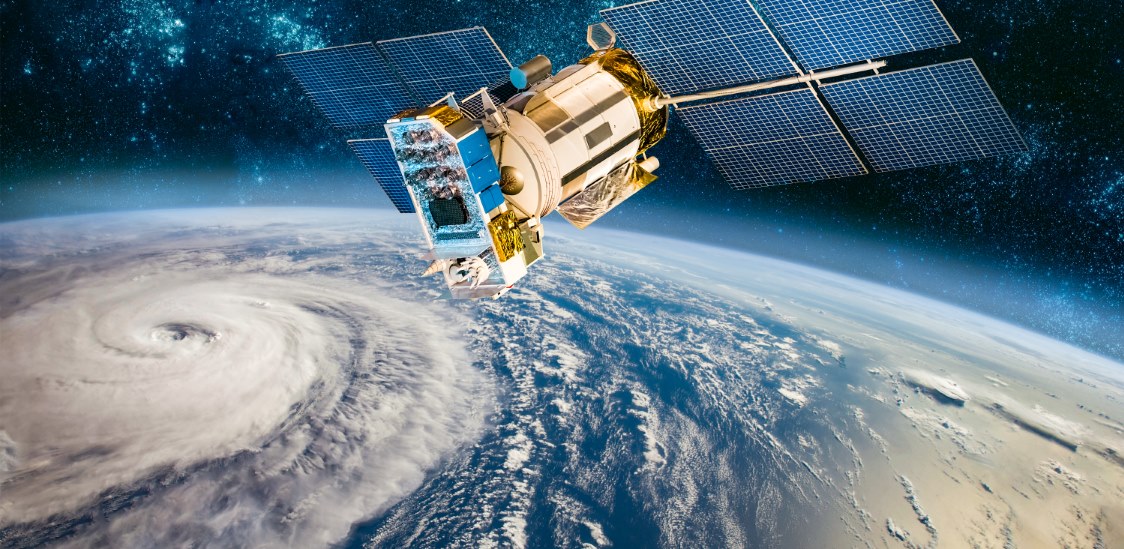The space industry has been transformed from an era of government-driven exploration in the 1950s through a period of commercialization to the current day, where tech titans are driving rapid growth and innovation, resulting in a gold rush. Space missions are almost routine, with SpaceX carrying out 96 in 2023. The satellite communications market is projected to reach $61.5 billion by 2031, with technology innovations a key driver.
Surge in satellite constellations
The satellite industry is rapidly evolving with the need to access space for navigation, communication, surveillance, reconnaissance, remote sensing, internet access, and space experimentation. There are currently over 8,377 active satellites located in three primary orbits:
- Geostationary (GEO) satellites remain fixed relative to the Earth's surface, making them suitable for delivering seamless and reliable connections for mobile satellite communications services such as broadcasting or inflight WiFi. Putting a satellite into GEO requires a vast amount of energy, given its distance from Earth and the required size, making it extremely expensive, which limits the use cases.
- Medium Earth Orbit (MEO) satellites offer reduced latency compared to those in GEO. Navigation applications like GPS, the Galileo system, and NavIC utilize these satellites. In MEO, satellites are smaller and require less energy than in GEO, making them more economically viable.
- Low-Earth Orbit (LEO) satellites have attracted significant investment. It takes less than 90 minutes to circumvent the Earth in this orbit. Satellites in LEO are significantly smaller, cheaper to build, and increasingly cost-effective, fueling the new wave of mega-constellations. These satellites support a wide range of applications, including emergency response, IoT, communications and mobile 5G broadband, and maritime.
LEO constellations are solving some of the challenges the military faces with satellite connections that are not always robust and lack the necessary bandwidth. This can cause critical issues for soldiers in the field or the navy trying to navigate the seas. However, the volume of satellites required and the short lifespan, coupled with the predicted growth of these constellations over the next decade, is raising concerns about the impact on space debris and light pollution, which are burgeoning problems.
Tech drivers
The space gold rush is creating an array of possibilities, and organizations are racing to deploy new technologies and systems. Innovations, including reusable launch rockets, the densification of electronic components, plummeting hardware costs, and increased standardization connecting satellites to rockets, have lowered the barriers to entry. This has helped drive the growth of the LEO mega-constellation. Organizations are turning to commercial off-the-shelf (COTS) components widely utilized in other sectors as competition intensifies to gain an advantage.
- Integrating Commercial Components
With more and more satellite systems launching into LEO to accelerate data transfer, COTS components are starting to be integrated. These technologies are battle-tested in the telecommunications and industrial sectors. However, the unique environment of space is a seismic challenge that can’t be underestimated. Extreme temperature fluctuations, radiation exposure, and debris are just a handful of space-specific conditions that impact the performance and reliability of components.
If the space gold rush is to achieve its lofty goals, the ability to quickly integrate reliable and robust technologies that perform under every possible situation is vital. This creates the need to emulate space to ensure commercial products are fit for the rigorous environment.
- Embracing Optical Communications
Another technology trend transforming satellite systems is the use of optical communications. As the need for bandwidth grows exponentially, using light to transmit information in space brings significant benefits over radio frequency. Optical links create a secure and resilient network for flexible data transfer over extreme distances without signal degradation. This eliminates the bandwidth and latency concerns associated with legacy satellite systems. Unlike radio, optical communications are sent in a narrow beam, which requires high-accuracy pointing. This makes optical links more resistant to jamming, spoofing, and eavesdropping, which is much better for confidential military communications.
Ensuring the seamless operation and reliability of optical inks in satellite communications requires extensive testing as satellites are in constant orbit, with signals impacted by variable fading, latency, and Doppler shifting. With the complexity and costs involved, optical links require thorough testing of every variable they might encounter.
Space ready
Technology will continue to play a pivotal role in the space gold rush. As organizations race to integrate the latest solutions, the ability to deploy battle-tested technologies fit for the harsh environment of space will determine the winners. However, unlike other sectors focused on releasing minimal viable products, ensuring operational confidence is mission-critical when it comes to the space industry.






















